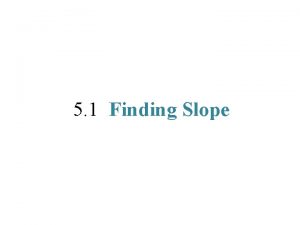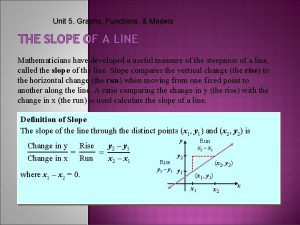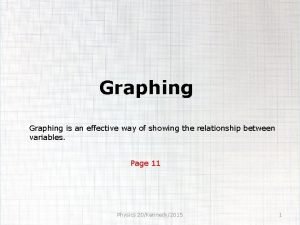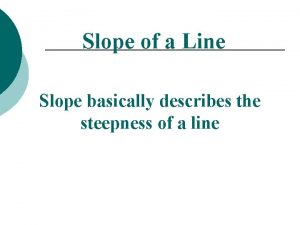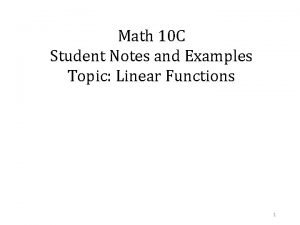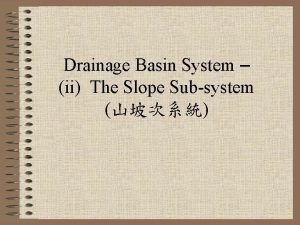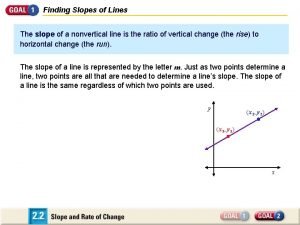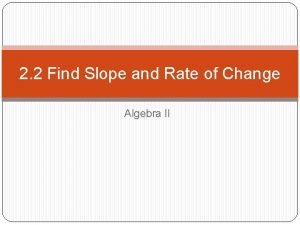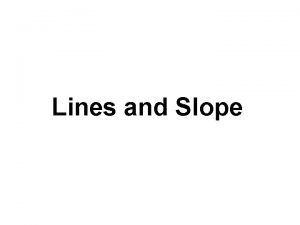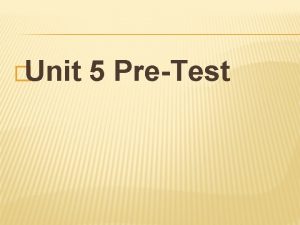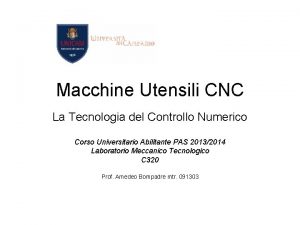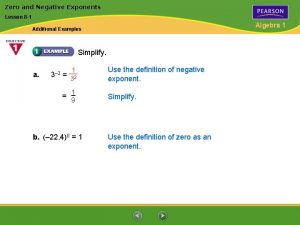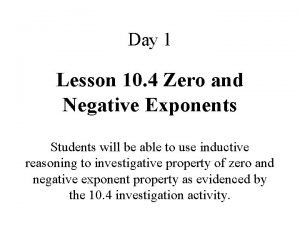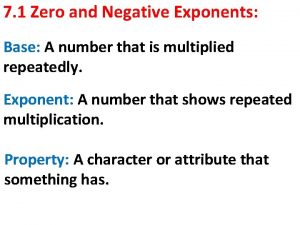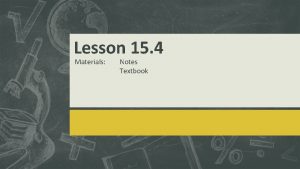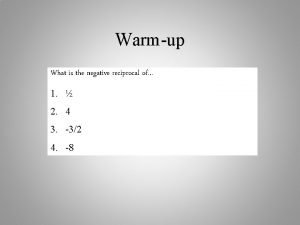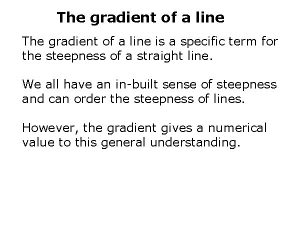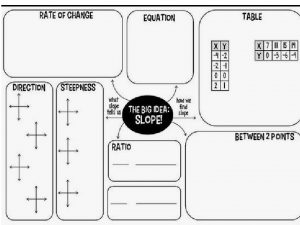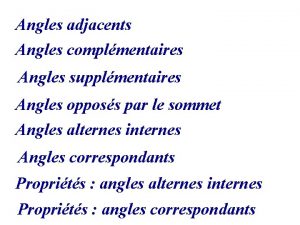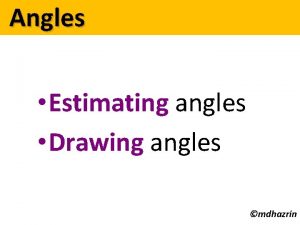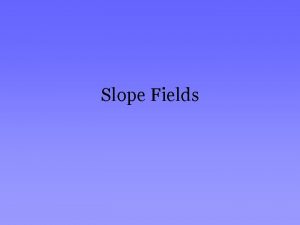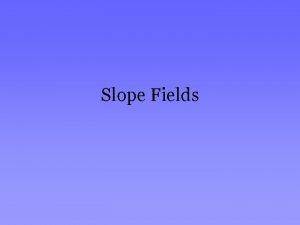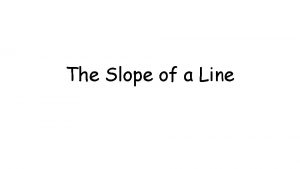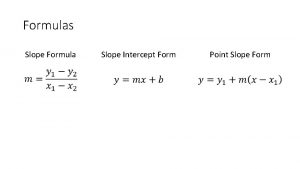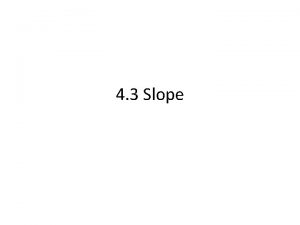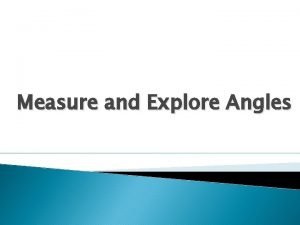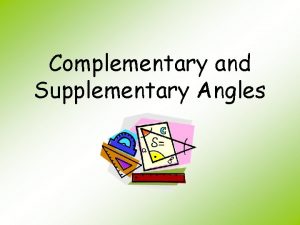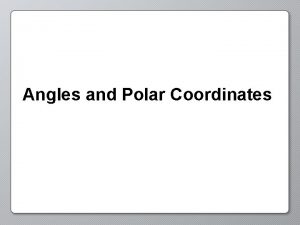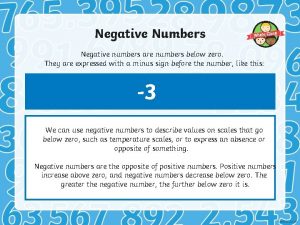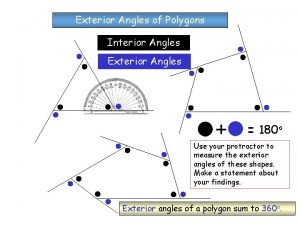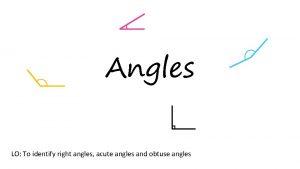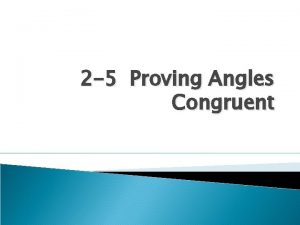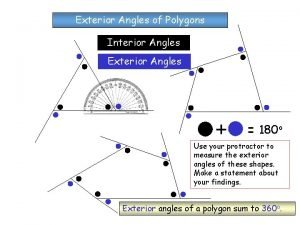Angles Recap Slope Types Zero Undefined Negative and





























- Slides: 29

Angles

Recap • Slope Types • Zero, Undefined, Negative and positive slope • Parallel and perpendicular lines when given slope • Slope Intercept form • When given a parallel slope and or perpendicular • Point Slope Form • When given a parallel slope and or perpendicular

What we will cover • All of the different types of angles

Angles • Positive Angles are measured counter clockwise (due to tradition) • GOES IN THE DIRECTION OF QUADRANTS I-IV • Therefore, negative angles are measured clockwise


Figure 1 Angle • Figure 2

You try • Name all possible angles on the diagram below:

Zero Angle (A RAY)

Acute Angle • Format An acute angle expressed as an inequality 0<x<90 An acute angle is more than 0 degrees, but less than 90 degrees.

Right Angle • Format Right Angle: x=90 For it to be a right angle, the degrees has to be exactly 90.

Obtuse Angle • Format Obtuse Angle: 90<x<180 For an angle to be obtuse, the angle must be greater than 90 degrees, but less than 180 degrees.

Straight Angle (Straight Line) • Format Straight Angle: x= 180 For something to be a straight line, the angle must equal 180 degrees. Nothing more and nothing less.

Reflex Angle • Format Reflex Angle 180<x<360 • For reflex, the angle must be more than 180 degrees and less than 360 degrees.

Full Rotation (circle Format: Full rotation: x=360 For a full rotation. The degrees must be equal to 360 degrees. • This is a "full rotation" or "revolution" or "complete turn" or "full circle"




Example

YOU TRY

• Two angles are complementary angles if the sum of their measures is 90 degrees. • Each angle is the complement of the other. • Two angles are supplementary angles if the sum of their measures is 180 degrees. • Each angle is the supplement of the other.

Complementary = Right Angle Supplementary = Straight Angle (line) • Adjacent angles are two angles that share a common vertex and side, but have no common interior points.


Example

You Try


Example

You Try

Example

You Try
 Positive negative zero undefined slope
Positive negative zero undefined slope Vertical
Vertical Slope is undefined
Slope is undefined Undefined slope
Undefined slope Slope undefined
Slope undefined Intercept form
Intercept form Difference between slope decline and slope retreat
Difference between slope decline and slope retreat Point-slope form definition geometry
Point-slope form definition geometry Slopes of lines
Slopes of lines Slope review classifying slope
Slope review classifying slope Parellel lines definition
Parellel lines definition Unit 5 pretest
Unit 5 pretest Slope
Slope Zero defect zero effect
Zero defect zero effect Funzioni preparatorie cnc
Funzioni preparatorie cnc Zero and negative exponents examples
Zero and negative exponents examples Zero and negative exponents worksheet
Zero and negative exponents worksheet 7-1 zero and negative exponents
7-1 zero and negative exponents Negative and zero exponents
Negative and zero exponents Romeo and juliet act 1 summary
Romeo and juliet act 1 summary Segment relationships in circles lesson 15-4
Segment relationships in circles lesson 15-4 Gv black cavity classification
Gv black cavity classification Understanding slope
Understanding slope How to know if the slope is negative or positive
How to know if the slope is negative or positive What is a negative reciprocal
What is a negative reciprocal Steepness of a line
Steepness of a line Life below zero: bank lending under negative policy rates
Life below zero: bank lending under negative policy rates Present perfect continuous conditional
Present perfect continuous conditional A point has:
A point has: Undefined terms and basic definitions worksheet answers
Undefined terms and basic definitions worksheet answers
